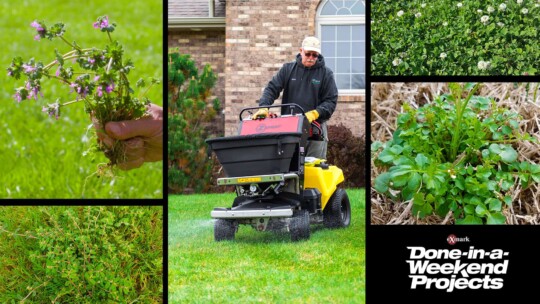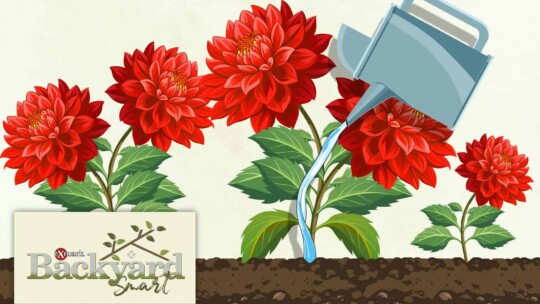While many homeowners understand that a dream yard requires well-fed grass and plants, some don’t know how to actually go about providing the optimal nourishment. Join landscape designer Doug Scott for plant and lawn fertilizer 101. From choosing the best fertilizer for your species types, to how and when to properly apply them. Follow these tips for fertilizing your lawn and garden to ensure success.
Fertilizer Numbers
All plants require six essential nutrients: Oxygen, carbon, and hydrogen are received above-ground through air and water, and nitrogen, phosphorus and potassium come from the soil they’re living in.
Every bag of plant food will contain three numbers separated by dashes. These represent the three nutrients your plants rely on their soil to provide: Nitrogen (N), phosphorus (P) and potassium (K)—in that order. For example, a bag of fertilizer labeled 11-7-7 contains 11% nitrogen, 7% phosphorus and 7% potassium, and the remaining 75% consists of inert fillers.
How to Choose the Right Fertilizer
Plant Growth: You should opt for all-purpose fertilizers—those with equal parts N, P and K—if overall plant growth is your primary objective.
Lush Green Lawn: When choosing a lawn fertilizer to promote lush green grass, pick a fertilizer with a higher first number—or, nitrogen proportion. (Most all lawn fertilizers will have a greater percentage of nitrogen.)
Fruit or Flower Production: If root growth or fruit and flower production is what you’re seeking, go with a plant fertilizer high in phosphorus—hence, one with a high middle number.
Winterize and Protect: Use phosphorus and potassium-rich fertilizers—those with higher second and third numbers—to winterize your plants and ward off diseases.
Fertilizing Tips
For both safety and the health of your plants, always read the label before using any fertilizer.
Resist the urge to fertilize newly planted grasses or plants until they’ve grown for a full year. If you do, you’ll run the risk of burning their root system.
More is not better where fertilizing is concerned. Over-fertilization will lead to burnt root systems and possible soil toxicity.
Always distribute granular fertilizer at the plant’s root zone.
Fertilize perennials and vegetables in early spring, just before or as new shoots begin emerging. Fertilize your lawn, trees and shrubs in early spring, then again in early fall. Annuals should be nourished during their growing season.



